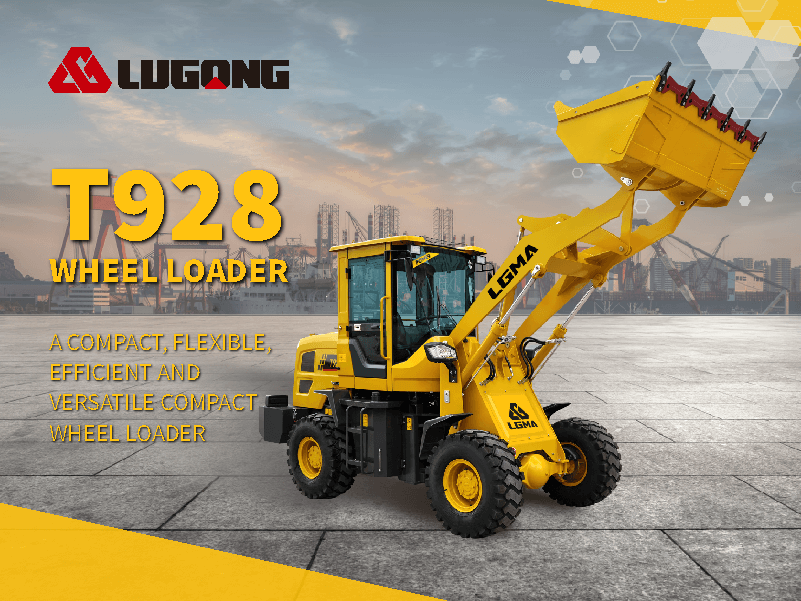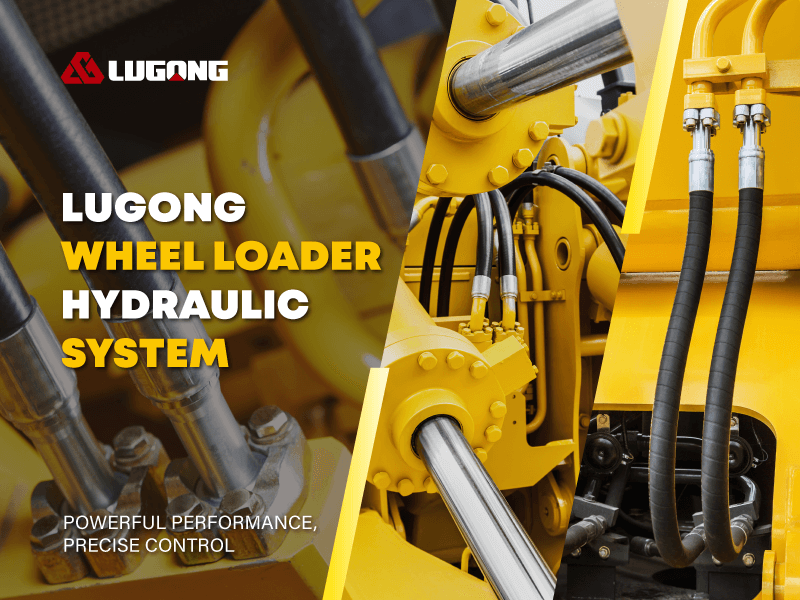How to accurately select the size and model of loaders for narrow construction
In modern construction, we often face such a dilemma: in urban renovation, underground garages, or compact agricultural greenhouses, conventional-sized loaders often cannot enter the site for construction, which increases the difficulty of construction. Then we need to choose a wheel loader with the right size and performance for the narrow construction site. Here, we will systematically sort out the selection ideas for you from three core dimensions.

Step 1: Size matching
You can only work if you can get in. This is the first iron rule in narrow working conditions. Before inspecting the equipment, please be sure to measure your construction site accurately. Three core data elements: width, height, turning radius
Wide machine: Take out the tape measure and measure the width of the narrowest passage and door opening on the construction site. The width of the loader must be less than this value, and at least 10-20 cm of safety margin must be reserved to deal with uneven road surfaces or operating errors. For example, in most tunnel-type construction sites, the width of the loader must be strictly controlled within 2 meters.
Height of the whole machine: Measure the lowest point of the working space, such as pipes, beams or greenhouse roofs. The height of the loader (including the cab) must be lower than this limit. For places with extremely low floor heights, such as farms or specific factories, models with a height of less than 2.5 meters or even 2 meters are ideal.
Turning flexibility: It is not enough to look at the size alone. The wheelbase and turning radius are the key to determining flexibility. The short wheelbase design can significantly reduce the turning radius, allowing the equipment to easily turn around and turn in a small space. This is the core indicator for evaluating whether the equipment can operate calmly in blind spots and corners.
Step 2: Performance considerations
A small body does not mean weak performance. Narrow working conditions do not mean the greater the force, the better. Excessive power will lead to increased fuel consumption and increased difficulty in control. Generally speaking, the power of a small wheel loader is in the range of 30-50 kilowatts, which is enough to meet most basic handling needs (such as sand, earthwork, and feed), achieving a perfect balance between power and fuel economy.
The steering system is the soul: In a cramped space, the quality of the steering system directly determines the work efficiency. Please give priority to: Full hydraulic steering/articulated steering: Large steering angle, easy to operate, and can achieve small radius steering.
Skid steering (skid steer loader): It can achieve 360° steering on the spot and is the king in extremely narrow spaces, but the wear and tear on the ground must be considered.
Step 3: Functional configuration
A loader that can handle multiple tasks is far more valuable than multiple single-function equipment. Quick-change device is the key: Be sure to choose a loader equipped with a hydraulic quick-change device. It allows you to easily change a variety of attachments such as buckets, pallet forks, breakers, sweepers, wood grabbers, etc. in a few minutes. This means that your loader can instantly transform into a forklift, light crusher or sweeper, greatly reducing the comprehensive purchase and operating costs and improving equipment utilization. Unloading height needs to match: Even if the space is narrow, the unloading height must meet the requirements. Make sure that the maximum unloading height of the loader can easily pass over the edge of the truck compartment and hopper to avoid the need for secondary transfer due to insufficient height, which affects efficiency.
How Lugong wheel loaders overcome common narrow working conditions
Combining theory with practice, let’s see how Lugong machinery provides precise solutions for specific scenarios.
Scenario 1: Renovation of old urban areas
Challenges: The streets are narrow, the buildings are dense, large equipment cannot enter, and the protection requirements for the surrounding environment are high.
Lugong solution: Lugong T928/T930 series small loaders. Its body width of less than 2 meters and small turning radius enable it to shuttle freely in the alleys of the old city like a nimble “street fighting pioneer”, efficiently complete the tasks of cleaning construction waste and transferring materials, and avoid unnecessary collision damage to historical buildings.
Scenario 2: Agricultural sheds and farms
Challenges: The passages of greenhouses, chicken houses and pig pens are narrow and the floor height is extremely low, and manual operation is inefficient and labor-intensive.
Lugong solution: Lugong T920/T930 low-shed special loader. This is a special model developed specifically for this purpose. The height of the whole machine can be as low as less than 2 meters. It can easily enter various low-rise sheds, flexibly complete feed handling, feces cleaning and other tasks, completely liberate manpower, and effectively protect the roof structure from damage.
Scene 3: Enclosed spaces such as underground parking lots and tunnels
Challenge: There are double strict restrictions on equipment size and operating height.
Lugong solution: Lugong T930 loader. In an environment with a floor height of only 3.5 meters, T930 can easily complete earth excavation and unload directly to the transport vehicle with its compact size and up to 3200mm unloading height. It can operate accurately without frequently moving the body, and the efficiency is doubled.
Conclusion
Choose a wheel loader for a narrow construction site. It requires us to start with precise measurement, be loyal to performance balance, and make good use of multi-functional configuration. Contact Lugong Machinery’s professional consultants now. We will provide one-on-one free selection consultation based on your specific working conditions to help you find the small loader that can create the most value!


